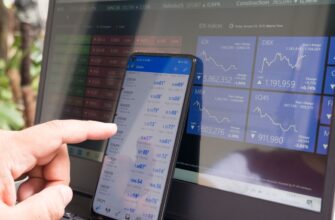Range trading Cardano (ADA) on Kraken offers a strategic approach to cryptocurrency investing with minimized risk exposure. By capitalizing on ADA’s predictable price movements between established support and resistance levels, traders can generate consistent returns while avoiding the volatility pitfalls of trend trading. This comprehensive guide reveals how to implement a disciplined range trading strategy specifically for ADA on Kraken’s secure platform.
- Understanding Range Trading Fundamentals
- Why Kraken is Ideal for ADA Range Trading
- Step-by-Step Range Trading Strategy for ADA
- Essential Risk Management Techniques
- Common Range Trading Mistakes to Avoid
- ADA Range Trading FAQ
- What’s the minimum capital needed?
- How long do ADA ranges typically last?
- Should I use leverage?
- How do Kraken’s fees impact range trading?
- What if ADA breaks the range?
- Can I automate this strategy?
Understanding Range Trading Fundamentals
Range trading involves identifying key horizontal price levels where an asset repeatedly bounces between support (price floor) and resistance (price ceiling). Unlike trend following, range trading thrives in sideways markets. ADA’s technical structure often exhibits clear consolidation phases, making it ideal for this approach. The low-risk nature comes from:
- Precise entry/exit points near tested boundaries
- Controlled position sizing
- Defined risk parameters through stop-loss orders
- Reduced exposure to market volatility events
Why Kraken is Ideal for ADA Range Trading
Kraken provides optimal conditions for executing low-risk ADA range strategies:
- Deep Liquidity: Tight spreads ensure minimal slippage on limit orders
- Advanced Charting: Built-in TradingView tools with 50+ indicators for range identification
- Security First: 95% cold storage and regulatory compliance protect your assets
- Fee Efficiency: 0.16% maker fees (for providing liquidity) enhance profitability
- Staking Integration: Earn 3-4% APY on idle ADA during range consolidation
Step-by-Step Range Trading Strategy for ADA
Implement this low-risk framework on Kraken:
- Identify the Range: Analyze ADA/USD daily charts. Look for at least 3 touches at support ($0.40-$0.45) and resistance ($0.50-$0.55)
- Confirm with Indicators: Use RSI (30-70 levels) and Bollinger Bands (price hugging bands)
- Entry Execution: Buy at 5% above support with limit orders. Short sales at 5% below resistance
- Risk Management: Set stop-loss 2% below support (long) or above resistance (short). Risk ≤1% per trade
- Profit Taking: Take profits at opposite boundary. Use 1:3 risk-reward ratio
- Position Size: Calculate using: (Account risk %) / (Entry – Stop loss distance)
Essential Risk Management Techniques
Protect capital with these safeguards:
- Volatility Filters: Avoid trading during Cardano network upgrades or major news events
- Timeframe Alignment: Confirm ranges on both 4-hour and daily charts
- Correlation Checks: Monitor Bitcoin’s movement – ADA often follows BTC trends
- Weekend Protection: Reduce position sizes Friday evenings to avoid gap risks
Common Range Trading Mistakes to Avoid
Steer clear of these pitfalls:
- Forcing trades in trending markets (wait for clear consolidation)
- Placing stops too close to range boundaries (allow 2-3% buffer)
- Overtrading during low-volume periods (focus on London/NYC overlap)
- Ignoring Kraken’s fee structure in profit calculations
- Chasing breakouts – wait for confirmation before abandoning range thesis
ADA Range Trading FAQ
What’s the minimum capital needed?
Start with $500+ to properly implement risk management while covering fees. Kraken has no minimum deposit.
How long do ADA ranges typically last?
Cardano consolidation phases average 2-6 weeks. Monitor volume contraction as continuation signal.
Should I use leverage?
Not recommended for low-risk strategy. Max 3x if used, with proportional stop adjustments.
How do Kraken’s fees impact range trading?
Maker fees (0.16%) favor range traders using limit orders. Factor in 0.32% round-trip cost.
What if ADA breaks the range?
Close positions immediately at stop-loss. Wait for new range formation or confirmation of trend.
Can I automate this strategy?
Yes! Use Kraken’s conditional orders to auto-trigger entries/exits at predefined levels.
Mastering ADA range trading on Kraken requires discipline but offers exceptional risk-adjusted returns. By combining technical precision with Kraken’s robust infrastructure, traders can capitalize on Cardano’s consolidation phases while strictly limiting downside exposure. Always paper trade new strategies and never risk more than you can afford to lose.








